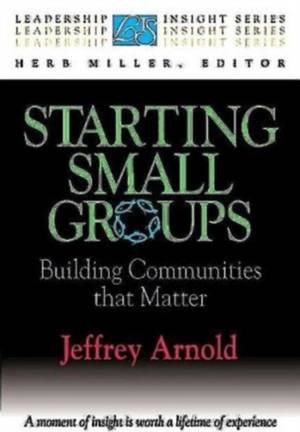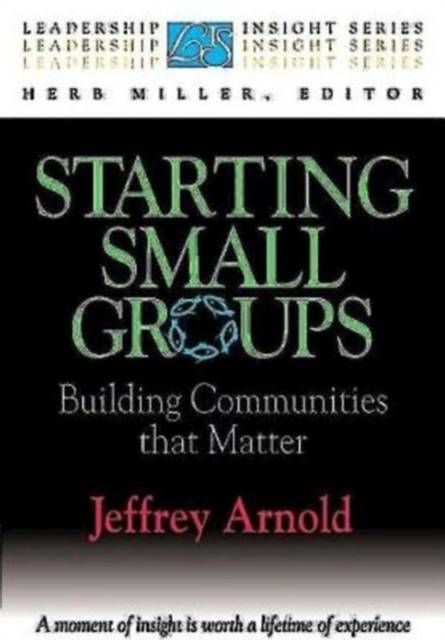
Je cadeautjes zeker op tijd in huis hebben voor de feestdagen? Kom langs in onze winkels en vind het perfecte geschenk!
- Afhalen na 1 uur in een winkel met voorraad
- Gratis thuislevering in België vanaf € 30
- Ruim aanbod met 7 miljoen producten
Je cadeautjes zeker op tijd in huis hebben voor de feestdagen? Kom langs in onze winkels en vind het perfecte geschenk!
- Afhalen na 1 uur in een winkel met voorraad
- Gratis thuislevering in België vanaf € 30
- Ruim aanbod met 7 miljoen producten
Zoeken
Omschrijving
In Starting Small Groups: Building Communities That Matter, Jeffrey Arnold discusses small groups and details step-by-step the method for designing a small-group ministry to fit a congregation's unique situations. Adapted from a workbook format that allows each congregation to identify its own particular needs and character, this resource includes ways to plan, envision, and strategize for the formation of small groups. The author looks at significant issues related to designing or revamping a small-group ministry, including group types; group structure; leadership training and support; marketing; recruiting people into groups; answering the why, when, how, and what of groups; and evaluating so that positive changes can be continually made. Ending each chapter is a series of workbook-style questions. The answers to these questions form the structure and content of each church's unique ministry design. While individuals, committees, and churches work their way through the questions, they may consult the sample strategy contained in an appendix at the end of the book. The writing style employed in this resource is simple, graphic, and easy to read. It is written so that both laypersons and pastors will be comfortable using it. Stories abound so that a process that may seem difficult comes to life in these pages.
Specificaties
Betrokkenen
- Auteur(s):
- Uitgeverij:
Inhoud
- Aantal bladzijden:
- 144
- Taal:
- Engels
- Reeks:
Eigenschappen
- Productcode (EAN):
- 9780687018567
- Verschijningsdatum:
- 1/11/1997
- Uitvoering:
- Paperback
- Formaat:
- Trade paperback (VS)
- Afmetingen:
- 153 mm x 230 mm
- Gewicht:
- 217 g

Alleen bij Standaard Boekhandel
+ 55 punten op je klantenkaart van Standaard Boekhandel
Beoordelingen
We publiceren alleen reviews die voldoen aan de voorwaarden voor reviews. Bekijk onze voorwaarden voor reviews.









